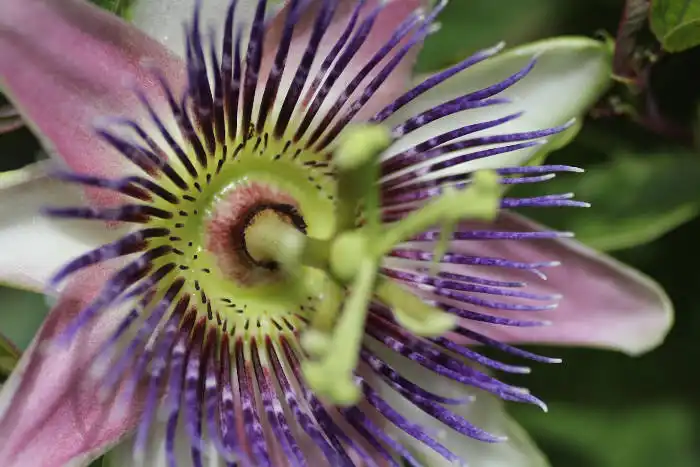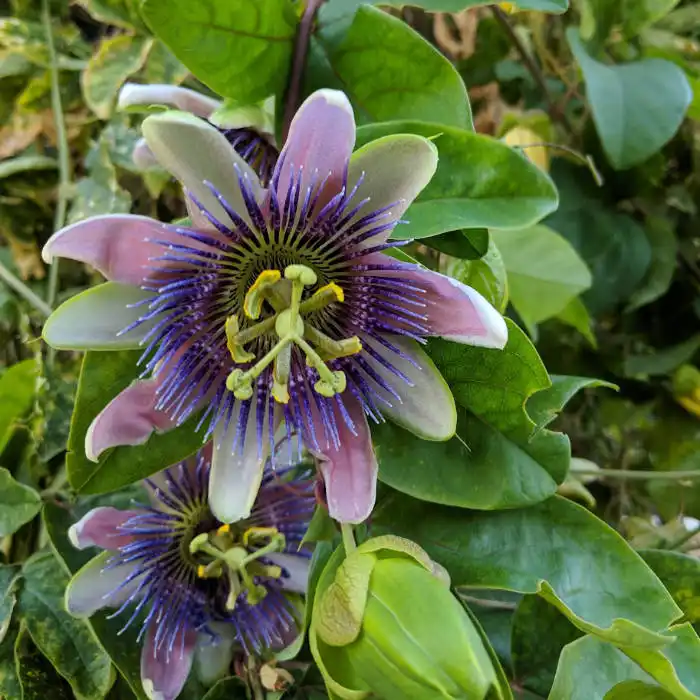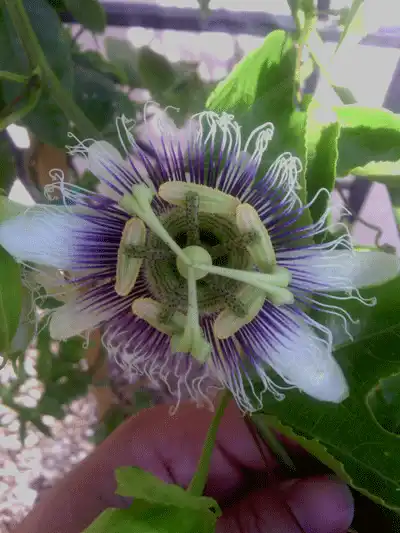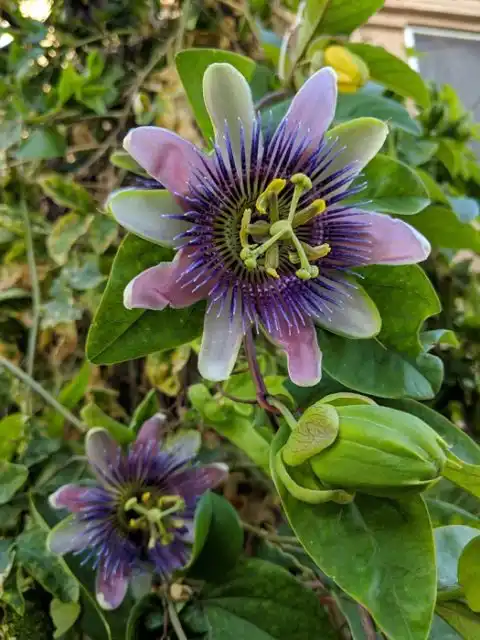If you’re looking for an usual plant to add to your garden consider a passiflora vine. The large passion fruit flowers attract pollinators and make a statement.
This post may contain affiliate links. Please see my disclosure policies. If you purchase after clicking an affiliate link we may receive small commission at no cost to you. As an Amazon Associate I earn from qualifying purchases.
A passion fruit vine is part of the Passifloracea family. Passion vines are also referred to as Passiflora.
Tips to Grow Passion Fruit Flowers in Phoenix
If you want to cover a block wall, trellis, or arbor the Passiflora vine is a great choice. They have very low litter, so they are nice vines to plant near a pool.
Not only do they crawl up an arbor or trellis well, they have large beautiful flowers and attract butterflies. In gardening zones 8-11 passion fruit vines are perennial. In cooler zones they are treated as an annual.
Passiflora Types of Passion Flower Vines
The two varieties of passiflora that grow well in Phoenix include:
- Purple Passion Fruit Flower or Passiflora edulis. This ones does well in the Phoenix metro area.
- Blue Passion Fruit Flower or Passiflora caerulea. This ones does well in the Phoenix metro area.
- Maypops or Passiflora incarnata grows in gardening zones 6-10. This is a popular variety in the southeast. Plant in partial shade or full shade in Arizona. Does best with Arizona east or north exposures.
- Passiflora arizonica. This variety is only found in Pima and Santa Cruz county.
Both produce flowers and fruit in Phoenix. Commercial passion fruit growers harvest fruit from the Passiflora edulis vine.
When and How to Plant Passion Vines
Passion vines prefer well-draining soil, but it can grow in just about any soil.
Dig a hole twice the size of the root ball of the plant. Amend clay soil with organic matter.
Provide a light support such as wire, twine or chain link fence for the tendrils to reach out and cling to. Or give it a trellis, arbor or pole for the vine to climb.
In Phoenix, the best time to find these at the nursery is the end of May beginning of June
Does Passiflora prefer sun or shade?
Passiflora vines prefer 6-8 hours of sun per day. Plant your vine where it receives morning sun with afternoon shade in Phoenix and it will be happy. They do well in either the east or north side of the yard. I found the one planted on the east side of my yard flowers more profusely than the one on the north side.
How to Care for Passion Vine
Plant Zone: gardening zones 9-11. In cooler climates the vine is deciduous and in Phoenix it is evergreen.
Light Requirements: Requires full sun or at least 6 – 8 hours of sun a day.
Soil Requirements: Prefers fertile well-drained soil. If your soil has a lot of clay mix in an organic soil amendment to improve the soil structure.
Water Requirements: Once established a Passion vine is drought tolerant. Water deep.
How fast and how big does the plant grow?
The passiflora vine can grow as high as 20 feet and 10 feet wide.
Does the Vine Attract Wildlife?
Yes, passion flower vines are host plants for Fritillaries. If you want to attract butterflies a passion flower vine is a great host plant.
They lay their eggs on the vine. The vine will be covered in caterpillars that love to munch on the leaves. They can decimate the plant in short order.

Passion Fruit Flower Bloom Time
In Phoenix, garden zone 9b, my passiflora vine starts to flower in early January and blooms through June. Each large beautiful flower blooms for one day. In cooler areas flowers bloom mid-summer. In tropical areas like Florida you may see blooms and fruit spring through fall.
The purple passion vine is one of my all-time favorite plants. It is easy to grow passion vines in Phoenix.
Best Varieties for Edible Passion Fruit
If you are looking for an edible variety of passiflora. The following varieties produce tasty fruit:
- Passiflora edulis is the variety commercially grown for fruit. It’s sweet-tasting fruit is ready to harvest when it turns orange, brown, or purple.
- Passiflora incarnata



